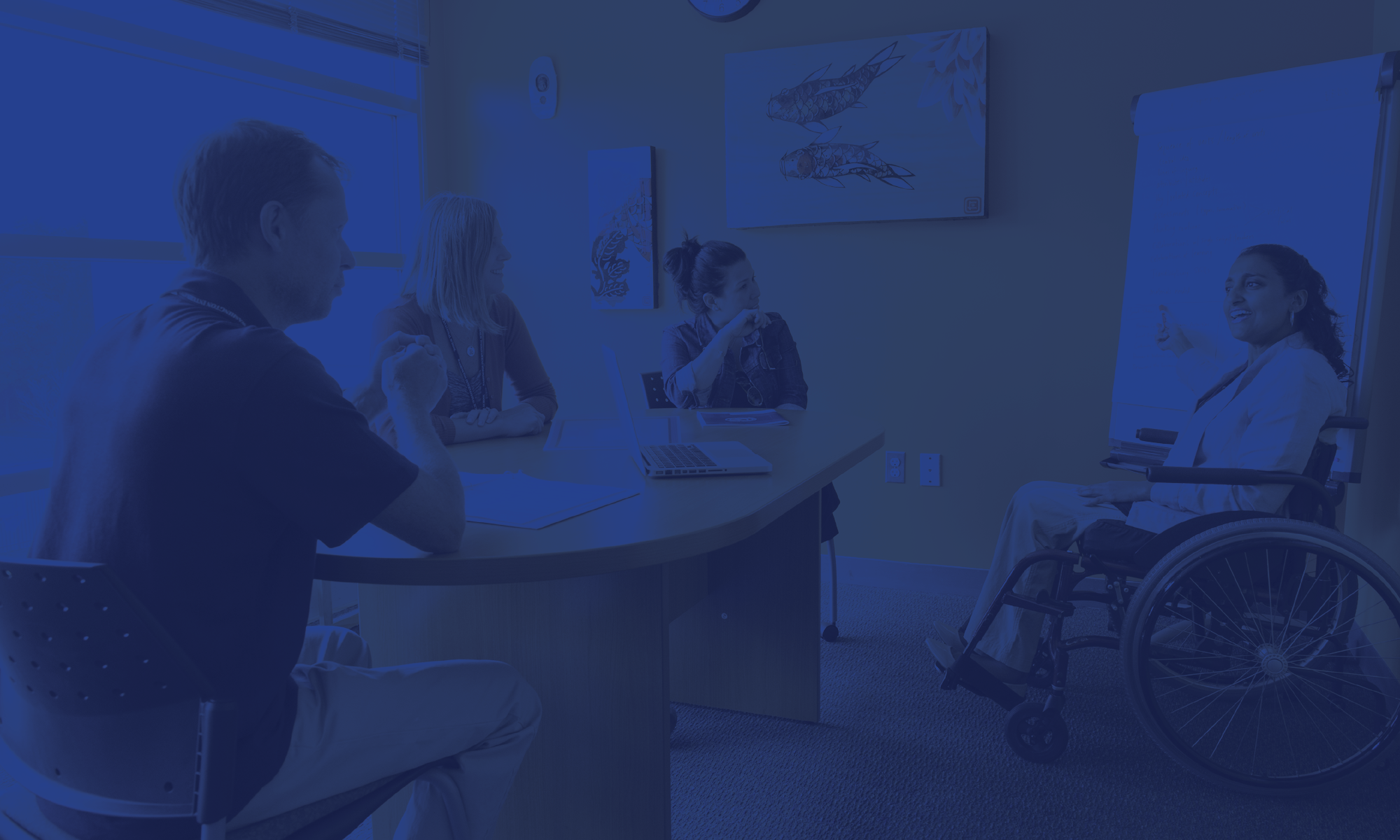As of last December, 3.6 million Americans avoid or are unable to leave their homes because of travel-limiting disabilities (Bureau of Transportation Statistics, 2018). While an increasing number of services, including mental health care and retail delivery, are now available with the push of a button, many people with disabilities have critical needs that must still be met through in-person appointments. These individuals are also less likely to own a vehicle. In 2018, 20% of non-workers and 12% of workers with disabilities between the ages of 18 and 64 lived in households without a vehicle (Bureau of Transportation Statistics, 2018), while the national percentage of households without a vehicle in 2017 was 7.9% (Bureau of Transportation Statistics, 2017).
While people with disabilities can’t bring the services to them yet, they can arrange for quicker and more reliable Non-Emergency Medical Transportation, or NEMT, thanks to the efforts of state Medicaid agencies and popular rideshare platforms. This summer, Arizona became the first state to change its Medicaid regulations to facilitate the use of ride-sharing services such as Uber and Lyft as NEMT providers. The decision was made with the encouragement of Arizona Medicaid Director Jami Snyder, who needed a solution for citizens missing appointments due to traditional state transportation programs being unreliable (Galewitz, 2019).
Uber and Lyft drivers can’t handle all of the demands of Medicaid patients across the states, but the addition of their fleet to available options can free up the schedules of state NEMT vehicles. With more drivers available to serve the large client base, state services will have greater capacity to stick to schedules and to meet the needs of patients with disabilities who require special vehicle accommodations. These services can be accessed in different ways according to agency preferences, with patients phoning in for transportation as they have previously, or calling for rides directly through the app (Galewitz, 2019) (O’Brien, 2019).
While these new partnerships haven’t yet shown significant savings for states or improvements in patient no-show rates, researchers, state officials, and ride-share company officials all anticipate the platforms playing an increasing role in Medicaid programs (Galewitz, 2019). With recent developments for these ride-share services such as Assembly Bill 5 in California, which requires gig companies like Uber and Lyft to treat drivers as employees (CA AB-5, 2019), NEMT may be a significant opportunity for these platforms to stay afloat.
Scott Bogren, Executive Director of the Community Transportation Association of America (CTAA), explains that even with an increase in ride costs, companies like Uber and Lyft will be able to stay competitive in NEMT markets because their technology provides a level of quality that other models have not matched. The companies themselves also seem to be gearing up for a more active role in NEMT, with new products such as Uber Assist aiming to provide higher levels of service to people who need it, such as those with mobility limitations.
With this shift, however, comes new considerations. Existing NEMT services have been subject to a number of healthcare provision regulations, and Bogren emphasizes that state legislatures will “need to be careful about allowing… [ride-share companies] …to avoid the regulations that they would require of other healthcare providers” (Bogren, 2019).
More specialized companies have also developed in recent years to meet this need. A lesser known ride-share company called Veyo was developed specifically to provide NEMT patients. Veyo drivers are trained in first-aid, CPR and privacy law requirements to provide transportation while protecting the safety and privacy of their riders. The Veyo fleet is also designed to provide all modes of transportation including wheelchair, stretcher, bariatric and others (Veyo, 2019). Since their initial launch in Arizona in 2016, the company has greatly expanded its fleet and aims to provide services beyond its current seven-state area (O’Brien, 2019).
The State Exchange on Employment and Disability (SEED) project, a partnership between CSG, the National Conference for State Legislatures (NCSL) and Women in Government, has examined accessible transportation, the Gig Economy, and automation and technology extensively through the Task Force on the Future of the Workforce.
Task Force members such as Alison Pascale from Audi of America and associated experts like Derek Pankratz of Deloitte have led important discussions among CSG members on how technology can reduce barriers for people with disabilities to access transportation and, in turn, employment. This increasing intersection of health needs, transportation and gig platforms will continue to shape the landscape of these discussions and could provide some unique opportunities to better serve citizens with disabilities and connect them to competitive and integrated employment.
SEED will lead a session on Disability and Workforce Innovation during the 2019 CSG National Conference in Puerto Rico on Dec. 4.
To learn more about the session, the National Conference and to register, visit: www.csg.org.
To learn more about SEED and the Future of the Workforce, visit the SEED program website.
References
AB-5 Worker status: employees and independent contractors. (2019). Retrieved from California Legislative Information: https://leginfo.legislature.ca.gov/faces/billNavClient.xhtml?bill_id=201…
Bogren, S. (2019, October 15). (A. Croteau, Interviewer)
Bureau of Transportation Statistics. (2017, May 20). Household, Individual, and Vehicle Characteristics. Retrieved from Bureau of Transportation Statistics: https://www.bts.gov/archive/publications/highlights_of_the_2001_national…
Bureau of Transportation Statistics. (2018, December 11). Travel Patterns of American Adults with Disabilities. Retrieved from Bureau of Transportation Statistics: https://www.bts.gov/travel-patterns-with-disabilities
Galewitz, P. (2019, September 26). Uber And Lyft Ride-Sharing Services Hitch Onto Medicaid. Retrieved from Kaiser Health News: https://khn.org/news/uber-and-lyft-hitch-onto-medicaid/
O’Brien, J. (2019, October 7). In Crowded NEMT Space, VEYO Looks to Stand Out. Retrieved from HealthLeaders: https://www.healthleadersmedia.com/finance/crowded-nemt-space-veyo-looks…
Veyo. (2019). The Veyo Difference. Retrieved from Veyo: https://veyo.com/the-veyo-difference/
